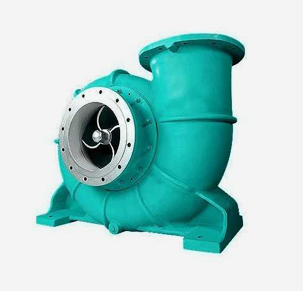Slovak
- Afrikaans
- Albanian
- Amharic
- Arabic
- Armenian
- Azerbaijani
- Basque
- Belarusian
- Bengali
- Bosnian
- Bulgarian
- Catalan
- Cebuano
- Corsican
- Croatian
- Czech
- Danish
- Dutch
- English
- Esperanto
- Estonian
- Finnish
- French
- Frisian
- Galician
- Georgian
- German
- Greek
- Gujarati
- Haitian Creole
- hausa
- hawaiian
- Hebrew
- Hindi
- Miao
- Hungarian
- Icelandic
- igbo
- Indonesian
- irish
- Italian
- Japanese
- Javanese
- Kannada
- kazakh
- Khmer
- Rwandese
- Korean
- Kurdish
- Kyrgyz
- Lao
- Latin
- Latvian
- Lithuanian
- Luxembourgish
- Macedonian
- Malgashi
- Malay
- Malayalam
- Maltese
- Maori
- Marathi
- Mongolian
- Myanmar
- Nepali
- Norwegian
- Norwegian
- Occitan
- Pashto
- Persian
- Polish
- Portuguese
- Punjabi
- Romanian
- Russian
- Samoan
- Scottish Gaelic
- Serbian
- Sesotho
- Shona
- Sindhi
- Sinhala
- Slovak
- Slovenian
- Somali
- Spanish
- Sundanese
- Swahili
- Swedish
- Tagalog
- Tajik
- Tamil
- Tatar
- Telugu
- Thai
- Turkish
- Turkmen
- Ukrainian
- Urdu
- Uighur
- Uzbek
- Vietnamese
- Welsh
- Bantu
- Yiddish
- Yoruba
- Zulu
Telephone: +86 13120555503
Email: frank@cypump.com
nov . 28, 2024 06:53 Back to list
Choosing the Right Septic Submersible Pump for Your Wastewater Needs
Understanding Septic Submersible Pumps An Essential Component for Wastewater Management
Septic systems are a vital part of many rural and suburban properties, providing an efficient means to handle wastewater generated by households. One crucial component of a septic system is the septic submersible pump, which plays a significant role in ensuring that wastewater is effectively managed and transported for treatment. This article delves into what septic submersible pumps are, their functions, types, and maintenance — essential knowledge for homeowners relying on septic systems.
What is a Septic Submersible Pump?
A septic submersible pump is a type of pump that is submerged in the effluent of a septic tank. Unlike traditional pumps, which are installed above ground, submersible pumps operate underwater, making them less susceptible to clogging and damage. This design is particularly beneficial in septic systems where space is limited, as they help save vertical and horizontal space.
Functionality of Septic Submersible Pumps
The primary function of a septic submersible pump is to move wastewater from the septic tank to the drainage field or a treatment facility. When the wastewater level in the tank rises to a certain point, the pump is activated by a float switch. The pump then moves the effluent through a discharge pipe, ensuring that the system operates efficiently and preventing overflow or backup.
One of the key advantages of using submersible pumps in a septic system is their ability to handle solids effectively. Most submersible pumps are designed to handle solid waste, which is critical given that septic systems treat both liquid and solid waste. By managing solids effectively, these pumps help reduce the risk of blockages and clogs in the drainage field.
Types of Septic Submersible Pumps
There are several types of septic submersible pumps available on the market, each with unique features suited to different needs. The two most common types are
septic submersible pump

1. Effluent Pumps These pumps are designed for pumping the liquid effluent from a septic tank to the drain field. They typically have a smaller motor and are capable of handling smaller solids (up to ½ inch in diameter). Effluent pumps are ideal for systems where solid waste has already been settled at the bottom of the tank.
2. Sewage Pumps Sewage pumps, on the other hand, are built to handle more substantial solids. They usually feature robust motors and intake designs that can manage larger waste particles, making them suitable for pumping raw sewage from the tank to a treatment facility.
When selecting a pump, it's crucial to consider factors such as the size of the property, the volume of wastewater generated, and the specific requirements of the septic system.
Maintenance of Septic Submersible Pumps
Proper maintenance of a septic submersible pump is essential for its longevity and efficiency. Regular inspections should be conducted to ensure that the pump is functioning correctly. Homeowners should look for signs of inefficiency, such as unusual noises, slow drainage, or frequent cycling on and off.
Additionally, it's important to keep the septic system free of harmful substances. Avoid flushing non-biodegradable items, chemicals, and grease as these can damage the pump and lead to system failures. It is also advisable to have your septic system inspected by a professional regularly, which can help identify potential issues before they escalate.
Conclusion
In conclusion, septic submersible pumps are a crucial element of modern wastewater management systems, supporting the safe and efficient treatment of household waste. Understanding their functions, the different types available, and how to maintain them is essential for homeowners relying on septic systems. By investing time in proper maintenance and care, homeowners can ensure that their septic systems, and by extension, their homes, remain free from wastewater-related issues. This ultimately leads to a healthier environment and less costly repairs in the long run.
-
High-Performance Air Pumps for Sand & Gravel | Efficient Transport
NewsAug.03,2025
-
ISG Series Vertical Pipeline Pump - Chi Yuan Pumps Co., LTD.|Energy Efficiency, Corrosion Resistance
NewsAug.03,2025
-
ISG Series Pipeline Pump - Chi Yuan Pumps | Energy Efficiency&Compact Design
NewsAug.03,2025
-
ISG Series Vertical Pipeline Pump - Chi Yuan Pumps Co., LTD.|High Efficiency, Low Noise, Durable
NewsAug.02,2025
-
ISG Series Vertical Pipeline Pump - Chi Yuan Pumps | High Efficiency, Low Noise
NewsAug.02,2025
-
ISG Series Vertical Pipeline Pump- Chi Yuan Pumps Co., LTD.|High Efficiency&Compact Design
NewsAug.02,2025










